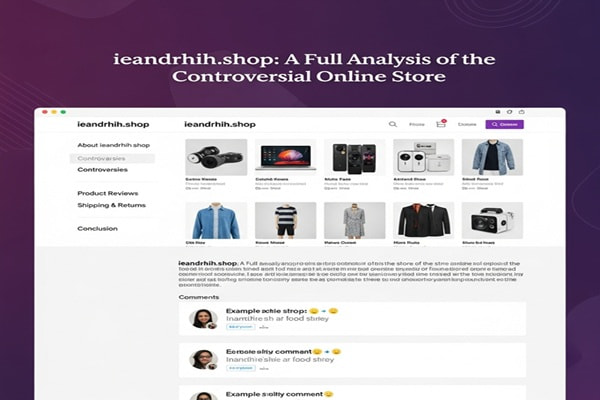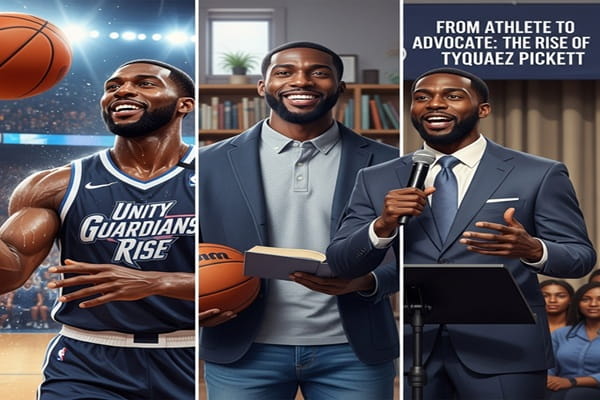Navigating the Controversy and Ethical Considerations of the Amanda Labollita NSFW Leak

In today’s hyper-connected world, privacy isn’t just a personal matter—it’s a public concern. And for internet personalities like Amanda Labollita, that line between public and private life gets even blurrier. Recently, Amanda became the center of a storm after private NSFW (not safe for work) content was leaked online without her consent.
The controversy didn’t just spark headlines—it reignited major conversations around digital privacy, consent, and the responsibilities of both users and online platforms. Whether you’re a fan, a content creator, or simply someone who uses the internet (so… all of us), there’s a lot to learn from what happened.
Let’s break it all down in a clear, respectful, and informative way—no shame, no blame, just honest insights.
Who Is Amanda Labollita?
Amanda Labollita rose to fame with her bold, expressive approach to online content. She blended lifestyle, fashion, and adult-themed material in a way that resonated with a wide audience. Platforms like Twitter and Instagram helped her gain a loyal following who admired her honesty, creativity, and confidence.
She carved out a space in both the adult entertainment world and influencer culture—two areas where visibility is both a blessing and a risk.
What Exactly Happened? The NSFW Leak Explained
The situation exploded when private, explicit content linked to Amanda was leaked online—without her consent. These weren’t promotional posts or part of her public content strategy. They were personal files, never meant for public viewing.
As the content spread, it quickly went viral across forums and social media platforms. It wasn’t just an invasion of privacy—it was a complete breach of trust. And sadly, Amanda isn’t alone. This kind of leak has happened to countless individuals—both famous and unknown.
This incident brought some serious questions back into the spotlight: Who owns our digital content? What are the limits of consent in a screenshot-driven world? And what should platforms do when privacy is violated?
The Public and Media Response: Support, Speculation, and Controversy
When the leak became public, reactions were mixed—and very loud.
-
Supporters rushed to defend Amanda, emphasizing the clear lack of consent and calling for accountability.
-
Critics and gossip outlets speculated about her choices, often confusing her public persona with private vulnerability.
-
Social media quickly became a battleground, filled with think-pieces, hot takes, and heated arguments.
What emerged was not just a tabloid moment—it was a deeper conversation about how we treat people online, especially those in adult industries or non-traditional public roles.
Legal and Ethical Questions That Demand Answers
Let’s get this straight: sharing explicit content without consent is illegal in many countries. It falls under revenge porn laws, digital harassment statutes, and privacy regulations. But just because it’s illegal doesn’t mean it’s always enforceable—especially when content spreads quickly and anonymously.
Ethically, it also raises big red flags:
-
Should platforms be more aggressive in removing non-consensual content?
-
How do we educate users to understand consent—even digitally?
-
And why are victims often shamed instead of protected?
Amanda’s experience has become a wake-up call. It’s shown how quickly things can spiral—and how unprepared we still are to handle the digital aftermath.
Amanda’s Response: Speaking Out With Strength
Rather than retreating, Amanda addressed the leak head-on. She spoke openly about the violation, expressing both her pain and her boundaries. Her message was clear: this content was shared without consent, and continuing to circulate it was an act of harm.
By speaking out, Amanda reclaimed part of her narrative. She reminded everyone that privacy matters, even for public figures. Her response also inspired others who’ve faced similar violations to share their stories, further amplifying the need for digital reform.
The Impact on Her Career and Public Image
Let’s be real—when controversies like this hit, careers can take a hit too. In the immediate aftermath, some brands and partners reportedly pulled back from collaborations with Amanda. Online hate intensified. And for a while, it looked like the damage might be long-term.
But something else happened too.
Amanda’s vulnerability sparked a new wave of support. Fans rallied behind her. Conversations around digital ethics gained momentum. And her response—measured, human, and unapologetic—earned respect from many who had never followed her before.
In fact, this controversy might have shifted her public image into something more powerful: an advocate for privacy rights and consent in the digital age.
Also Read : Xiangaijiaqi. com: Your Go-To Travel Blog for Dream Holidays in 2025
What This Means for All of Us
This isn’t just Amanda’s story. It’s a story about how we live online, how we treat each other, and how quickly a moment of curiosity can become a violation.
Whether you’re a content creator, influencer, or just someone who shares photos with friends, this situation brings up essential reminders:
-
Private content is never truly safe online. Even trusted recipients can be hacked or turn malicious.
-
Consent is ongoing and non-transferable. Just because someone shared something once doesn’t mean it’s fair game forever.
-
We all have a role in protecting each other’s privacy—from how we talk about leaks to how we report harmful content.
What Needs to Change: The Future of Digital Privacy
Amanda’s case is part of a growing movement calling for better laws, technology, and education around digital safety. Here’s what experts and advocates say needs to happen:
-
Stronger laws: Many countries still lack solid legislation around digital consent. Enforcement needs to catch up with the internet.
-
Faster platform response: Social media sites must act quicker to take down non-consensual content and support victims.
-
Better education: From schools to workplaces, people need to understand their rights—and the risks—when it comes to digital sharing.
It’s not about restricting freedom of expression. It’s about protecting people from exploitation, violation, and long-term harm.
Final Thoughts: Why This Story Matters
The Amanda Labollita NSFW leak isn’t just gossip. It’s a case study in how vulnerable we all are in a connected world, and how important it is to treat people—famous or not—with empathy and respect.
As we move forward in this digital age, we all need to ask ourselves:
-
Am I respecting others’ privacy online?
-
Am I supporting platforms and policies that protect digital safety?
-
Am I helping build a more respectful and ethical online culture?
Amanda’s experience is painful, yes—but it’s also a powerful reminder that we can all do better.
FAQs About the Amanda Labollita NSFW Controversy
What is the Amanda Labollita NSFW controversy about?
Amanda Labollita was the victim of a privacy breach when explicit content of hers was leaked online without consent. The situation sparked debates around digital privacy, consent, and ethics.
How did Amanda respond to the leak?
She spoke out publicly, expressing emotional distress and urging people to stop circulating the content. Her response emphasized consent and digital boundaries.
What are the legal implications of the leak?
In many jurisdictions, leaking and sharing explicit content without permission is illegal. Amanda’s case highlights the urgent need for better enforcement of digital privacy laws.
How did it affect Amanda’s career?
Initially, there was backlash and brand fallout. However, her transparency and resilience have shifted public opinion and opened doors for advocacy around privacy rights.
What can we learn from this?
Respecting consent online is just as crucial as offline. The incident reinforces the importance of digital ethics, platform accountability, and public awareness.



